Lord of the Rings: Saruman the Red and the Weirdest Choices in the Animated Movies
Boromir the Viking, Gollum the Frog, Samwise the Troll. The animated movies' take on The Lord of the Rings is...unique.
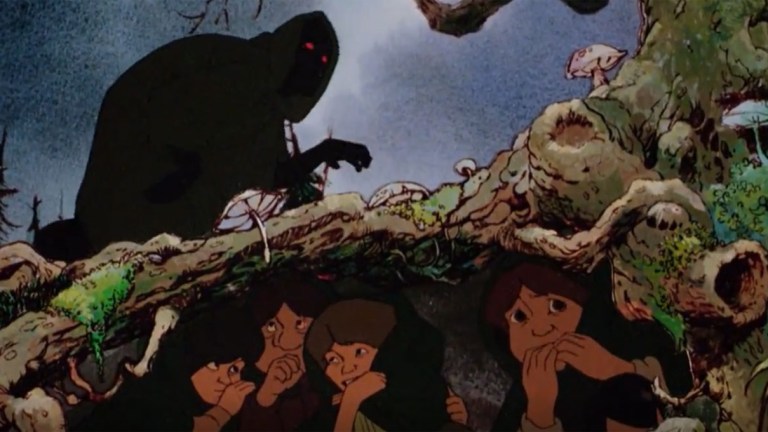
By the late 1970s, there were two major animated adaptations of The Lord of the Rings in development. Arthur Rankin Jr. and Jules Bass, known for their holiday season specials like Rudolph the Red-Nosed Reindeer and Frosty the Snowman, had directed an animated dramatization of The Hobbit for television, broadcast in 1977 and they were planning a sequel, also for television, based on The Lord of the Rings. But filmmaker and animator Ralph Bakshi beat them to it in 1978 when he directed an animated feature film, The Lord of the Rings, which he intended to be Part 1 of 2. The studio (United Artists) refused to put Part 1 on the title though, and never greenlit Part 2. Instead, Rankin and Bass released a made-for-television sequel to their Hobbit film under the title The Return of the King, which finished off J.R.R. Tolkien‘s epic story.
The Rankin/Bass Hobbit film is seriously underrated these days, and there is good stuff in the two films based on The Lord of the Rings as well. The performances are mostly pretty good, especially John Hurt as Aragorn in Bakshi’s film. The attack on The Prancing Pony in Bree, the Black Riders chasing Frodo across the countryside, and the dramatic Battle of Helm’s Deep are all impressive sequences. Gollum/Smeágol’s debate with himself is also well done, and a clear influence on Jackson’s films. Sam’s temptation by the Ring and Éowyn’s defeat of the Witch-King of Angmar in the Rankin/Bass film are also really exciting moments that are well-adapted.
But over the course of the two, there are also some directorial and animation choices that are, shall we say, less successful…
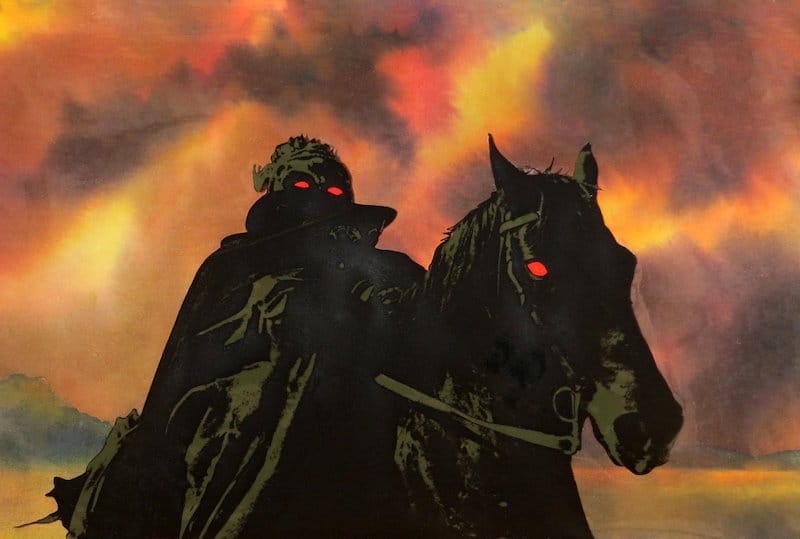
Bakshi’s Film Mixes Rotoscoping with Traditional Animation
This is a controversial complaint to kick us off, as the animation style of Bakshi’s film is one of the things a lot of fans like. Bakshi, like Peter Jackson later, was determined to make a film that presented Tolkien’s story in the same serious tone (for the most part) of the books. His use of rotoscoping – filming live action scenes and then tracing over them to produce an animated look – was part of that approach. It was also a cheaper way of creating the battle scenes.
The problem is Bakshi had a lot of background characters rotoscoped to look like three dimensional, live action human (or Orc) characters. But all the principal characters, though live models were used, are drawn in traditional two-dimensional animated style. As a result, we get weird, trippy sequences like the one in the bar-room of The Prancing Pony. The inn has one big room in which live-action actors (with what looks like one of PowerPoint’s “artistic effects” added to them) are interacting with two-dimensional animated characters. The same thing happens in the battle sequences, where it looks even stranger, as live-action Orcs fight live-action Riders of Rohan while carrying around animated Hobbits.
Some fans really enjoyed the rotoscoping as it gave the film a distinctive look, a thoughtful and artistic style, and added to the “more serious than Disney” tone. But the ultimate effect still produces a series of rather odd images and a somewhat jarring mash-up of styles that can end up taking the viewer out of the story.
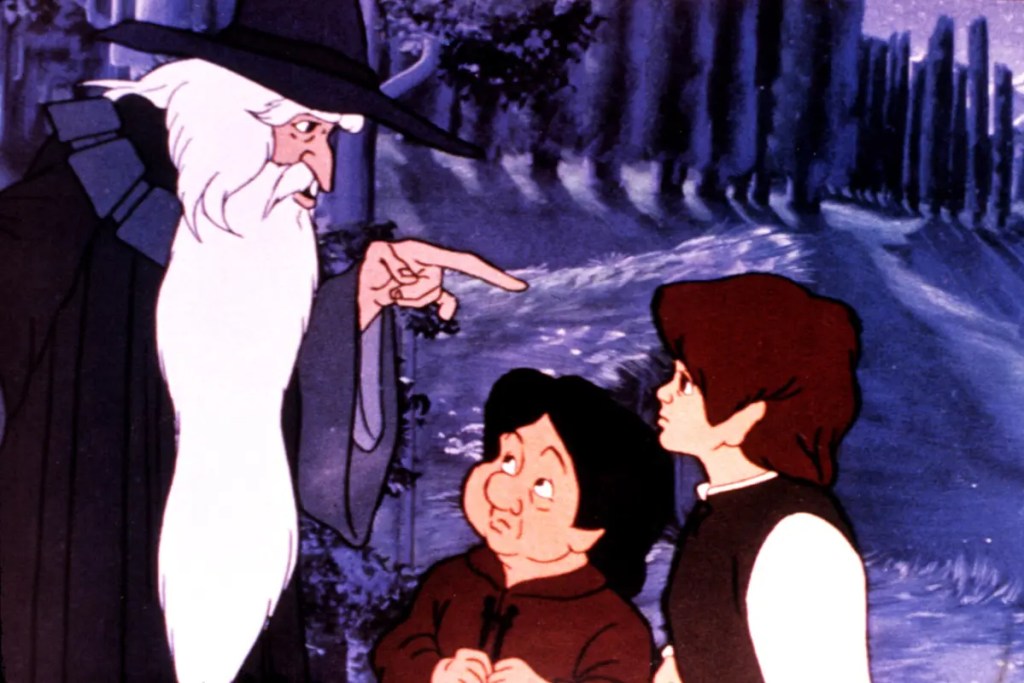
There’s an Odd and Unnecessary Time-lapse
The 17-year time gap between Bilbo’s birthday party and Gandalf coming to warn Frodo about the Ring is book-accurate, but an odd choice for a movie. It’s one of a number of moments across both adaptations that seem to come from a genuine desire to represent the book as accurately as possible, without considering the needs of a new medium and a seriously abbreviated version of the story.
Bakshi’s film covers the whole of The Fellowship of the Ring and most of The Two Towers – surely there was no need to specify that Gandalf was away for 17 years? Jackson’s film would later wisely imply that he went off to research the Ring for a few months, which keeps the pace up and makes much more sense for a movie.
On top of that, the animated movie marks the passing years with a very brief montage of different seasons in the Shire. It’s a nice idea and one that has worked well in other films, but it happens so quickly that it looks like a strange flickering, faulty image more than a deliberate effect.
Sam Looks Like a Small Troll and Sounds Like a Comedy Sidekick
Suiting the serious tone of the film, Frodo, Merry, and Pippin are all animated with fairly simple looks that represent them as looking like short human beings with large hairy feet, following Tolkien’s description. Sadly, the same is not true for poor Sam.
Sam has exaggerated characteristics (his nose and chin, for example), and missing teeth, and his body shape is slightly different to the other Hobbits. Voice actor Michael Scholes is using the same broadly West Country British accent as Sean Astin did in the live-action films, but while Astin simply spoke normally in that accent, like a person from Bristol or Devon does, Scholes adds an element of exaggeration to his performance, reading his lines like some kind of comedy character, and both script and performance combine to make Sam seem rather stupid.
There’s a moment when Aragorn is telling the Hobbits the story of Beren and Lúthien. As Aragorn explains that they were lovers, Sam puts his hand on Frodo’s shoulder and the two of them share a look. It’s presumably meant to be a sweet and romantic moment, an interpretation of their relationship that might not have been quite what Tolkien had in mind but that is entirely reasonable based on the text, and is popular with a lot of fans (Sir Ian McKellen talks about the importance of physical contact between Frodo and Sam to gay fans in the DVD extras on The Fellowship of the Ring). But Sam’s characterization as a bumbling comedic fool and his distinctive character design make it look comical and silly instead – he and Frodo are such different characters, they don’t seem compatible in this version.
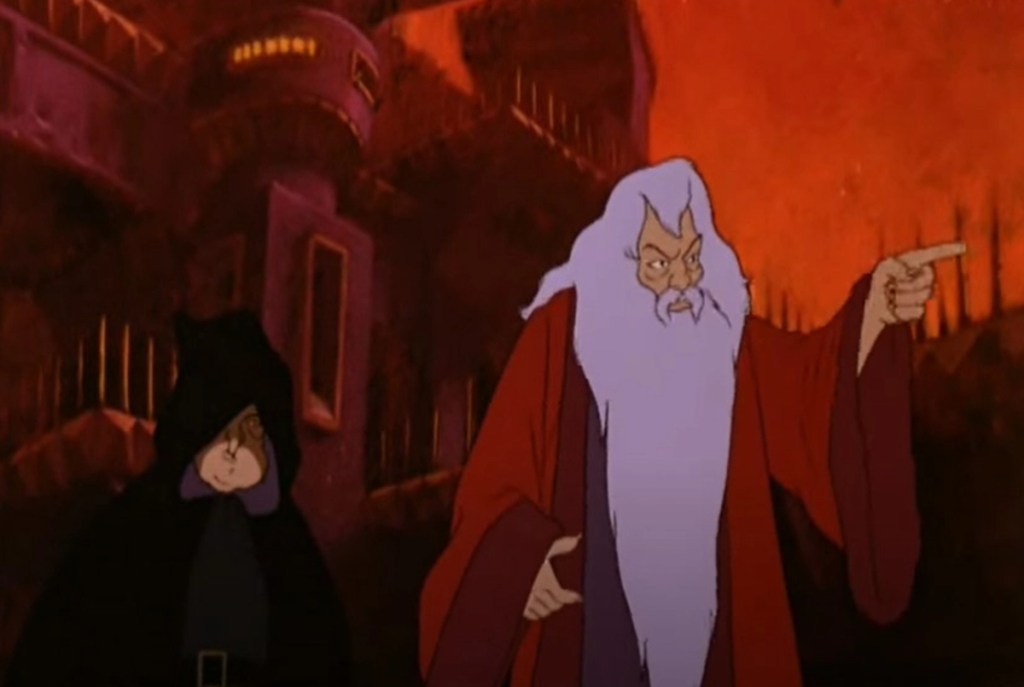
Saruman the White Is Wearing Red
Saruman the White, Gandalf the Grey, Radagast the Brown. The costume choices would seem fairly obvious here. But no – Bakshi’s Saruman is wearing a bright red robe over a purple-ish long tunic.
This seems to be another attempt to be book-accurate in a way that isn’t possible in this style of animation, or indeed on a movie screen at all. In the book, when Gandalf is telling everyone at Rivendell what happened to him that delayed him, he says that Saruman claimed that he is now Saruman of Many Colors. “I looked then,” Gandalf says, “and saw that his robes, which had seemed white, were not so, but were woven of all colors, and if he moved they shimmered and changed hue so that the eye was bewildered. ‘I liked white better,’ I said.”
But the animated Saruman isn’t wearing a translucent, rainbow-colored gown, nor is he wearing many colors. He is wearing red with a purple-ish tunic underneath. And the statement doesn’t mean very much when he has barely been introduced as Saruman the White. Ultimately, in a screen adaptation, it really makes more sense to simply put Saruman in white and skip that particular line from the book.
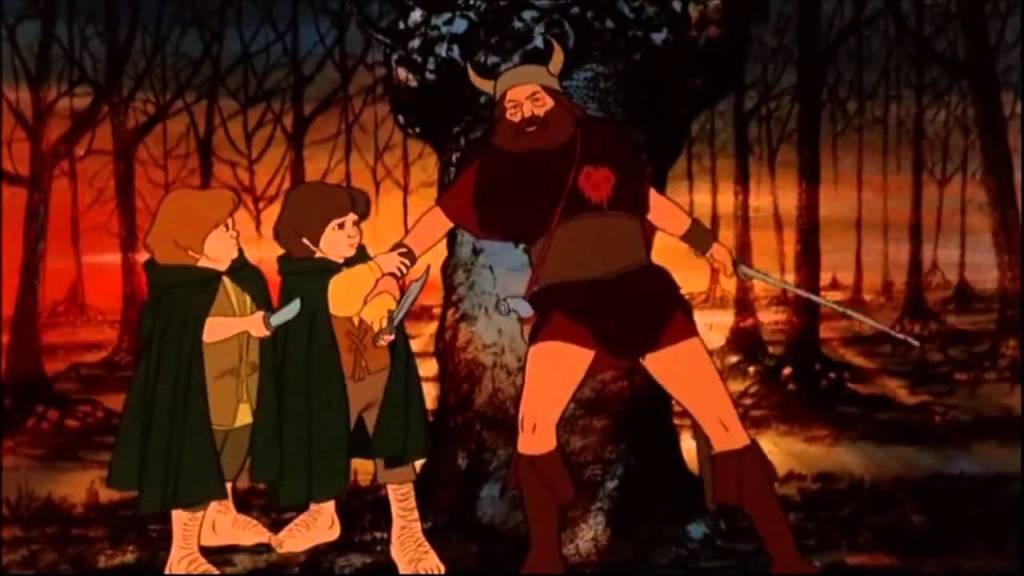
Boromir Is a Viking
Boromir comes from Gondor, and there are some superficial similarities between Gondor and medieval Viking cultures. The crown of Gondor has wings on it, like the Valkyries’ headgear, and their Númenorean ancestors were sea-going people who used ship burials for their dead. Aragorn, Legolas, and Gimli give Boromir a ship burial in The Two Towers, though that has more to do with their need to chase the Orcs who have captured Merry and Pippin without stopping to dig a grave.
But Gondor has far more in common with other historical societies. Tolkien described it most often as being like the Byzantine Empire, the eastern half of the Roman Empire that survived for another 1,000 years after the fall of Rome. It is an ancient civilization built on cities with impressive monumental architecture, and the beacon-lighting system of warnings comes from Byzantium as well. Tolkien also compared Gondor and Númenor to ancient Egypt, with its similar colossal sculptures and, again, fancy crowns.
So why is Boromir wearing a horned Viking helmet that looks like a cheap party costume?!
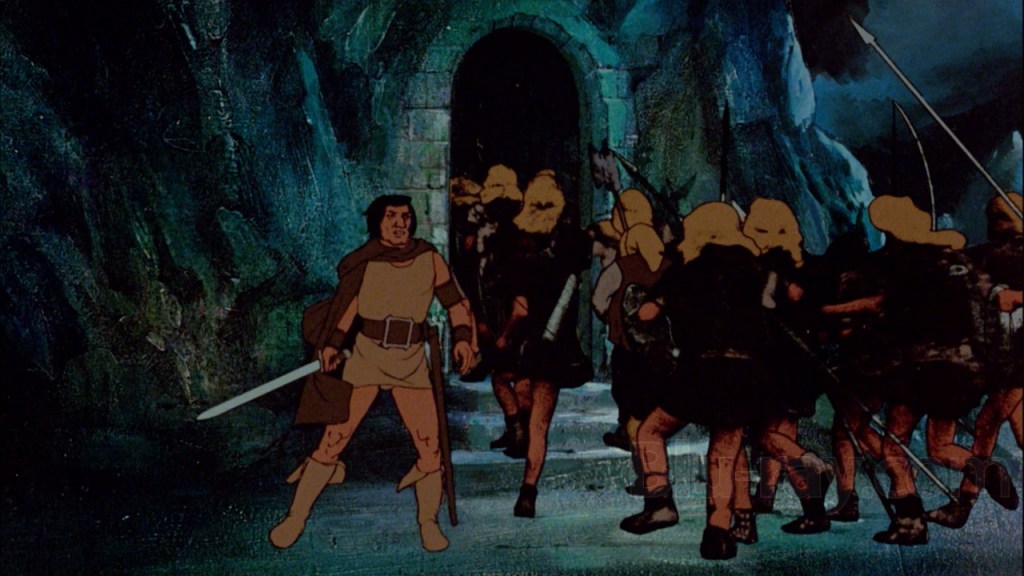
All the Human or Part-human Men Are Wearing Ridiculously Short Tunics
Not only is Boromir wearing a ridiculous pseudo-Viking helmet, he, Aragorn, and Elrond are also all wearing ludicrously short tunics. Aragorn’s look is sort of generic-medieval and Elrond is wearing an almost Roman-looking white tunic with a red cloak and Roman bowl-cut hair. But all three are wearing tunics that are practically riding up their animated underpants. Elrond is wearing grey leggings with his, but Boromir and Aragorn, and, indeed most of the Rohirrim, are running around the mountains with their knobbly knees out.
This seems extremely impractical. Boromir is wearing Viking-style furs with his horned helmet, so why is he letting his legs get cold? Aragorn has been wandering in the wild for years – didn’t he ever stop to put on a pair of tights?
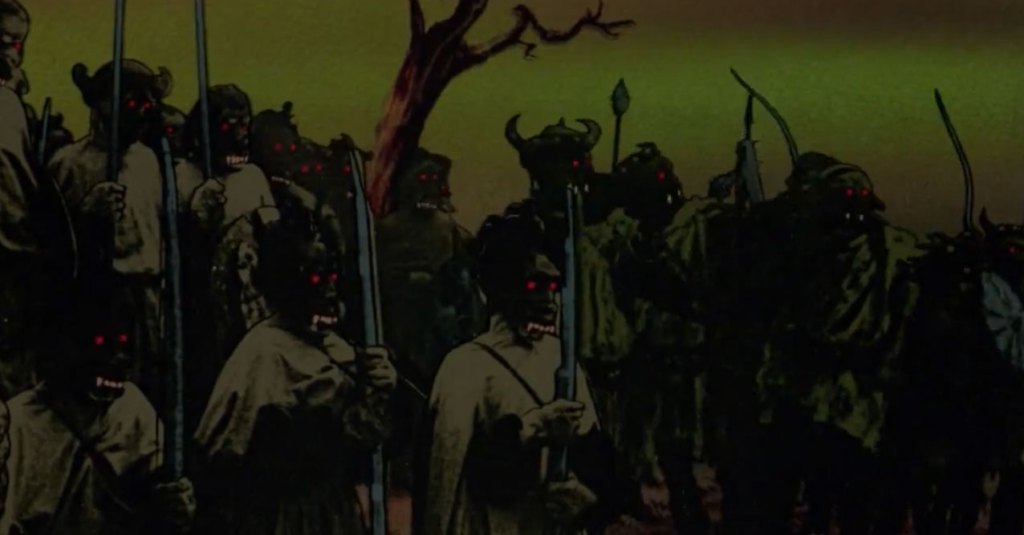
The Orcs’ Blood Is Pink
Peter Jackson’s Orcs bleed black blood because it gave him the chance to show a lot more gore in the fight scenes and keep the desired PG-13 rating, as long as there wasn’t too much red blood on display. The Klingons in Star Trek VI: The Undiscovered Country bleed pink blood, partly for the same reason, and also because it makes them seem more alien.
But Boromir bleeds quite substantial quantities of red blood in Bakshi’s film, and the splashes of pink hardly go with his Orcs’ fearsome helmets and glowing red eyes. If they had to bleed something other than red, wouldn’t green have been a better option?
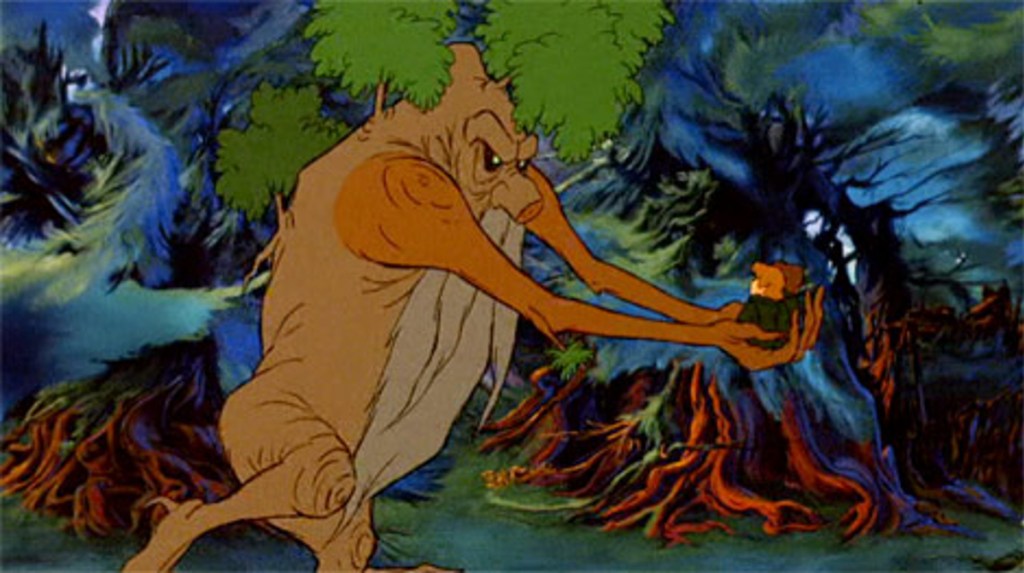
Treebeard Looks Like a Parsnip
Just… what about Tolkien’s description of Treebeard as looking like a tree suggested this “chunky parsnip” artistic design? Have you ever seen a tree that was that shape?!
The Rankin/Bass Return of the King Is Clearly a Back-door Sequel to the Bakshi Lord of the Rings
Because Bakshi had intended his film to be Part 1 of 2, it cuts off abruptly after the battle of Helm’s Deep, with the story clearly unfinished. Meanwhile, Rankin and Bass faced the same problem as everyone else in adapting The Lord of the Rings – there is too much story to fit into one feature film, especially one that is only 98 minutes long. Their solution was elegant – after a brief framing device set around Bilbo’s birthday party in Rivendell, they simply started their story at the point Bakshi’s film had left off, so that all three films together make a trilogy. In fact, they don’t make sense any other way, as Rankin and Bass don’t bother to introduce any characters beyond the core Hobbits and Gandalf, so Theoden and Éowyn just turn up at Minas Tirith, and if you haven’t read the book or seen the Bakshi film, their sacrifice doesn’t mean much.
It’s a neat idea and for years the three together were the best screen dramatization available. But watching them as a trilogy is certainly an odd experience. For one thing, everyone except Sam suddenly has an American accent, and Roddy McDowell as Sam uses a different English accent than Scholes’ West Country one. The character design, naturally, follows the design from their earlier Hobbit film, so the Orcs look like the goblins from the Misty Mountains in The Hobbit rather than Bakshi’s live-action figures with scary helmets, and the Hobbits have enormous eyes, especially Frodo (on the plus side, although Sam has a big nose, he no longer looks like a small troll).
Overall, the Rankin/Bass films have a different tone to the Bakshi film. The Hobbit was a musical children’s animation, and The Return of the King, although more serious in tone than the earlier film was, is still closer to its own predecessor than Bakshi’s take on the story. There are advantages to this approach – without the rotoscoping, the film feels more like it knows what it is (an animation aimed at a family audience) and it’s a pretty decent sequel to the Rankin/Bass Hobbit – except for the minor niggle that half the story is missing unless you watch the Bakshi Lord of the Rings in between the two. But even if you do, you get mental whiplash from the change in style and tone.
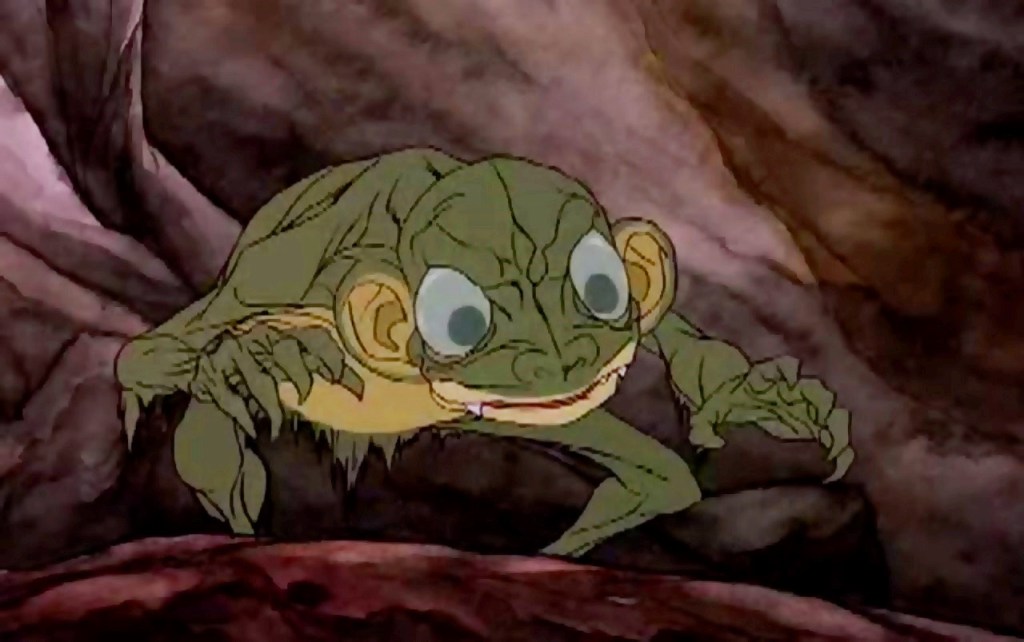
The Rankin/Bass Gollum Looks Like a Frog
The Rankin/Bass films made plenty of odd animation choices as well – Elrond, for example, has a crown of stars around his head for no obvious reason. They also introduce an odd idea about the Hobbits getting gradually taller (the older ones being shorter than the younger), so that Gandalf can look at the audience and suggest that we might all be descended from Hobbits. But the most egregious is definitely the character design for Gollum.
This was another hangover from their Hobbit adaptation, of course, where they had taken Tolkien’s description of Gollum a little bit too literally. In The Lord of the Rings books, Gollum is referred to as jumping like a frog, and an Orc describes him as looking a bit like a frog. In The Hobbit, Tolkien just calls him a “small, slimy creature” with “big round pale eyes in his thin face.”
For some reason, Rankin and Bass and their animators decided this meant Gollum should like a giant frog, green slimy skin and all. In The Return of the King, they perhaps wisely cut his part back to the bare minimum, but he could hardly be cut from his essential role in the dramatic climax, so there he is in all his Kermit-on-a-really-bad-day glory. It’s not easy being green.
While it is easy to poke fun, the rather odd choices shouldn’t take away from the fact that there is good stuff in these adaptations, and the films are a bit underrated now that they are held up to the impossible standard of the live-action films. But Jackson’s movies were all made by the same team of people, are live action (which suits the tone of the books better), and have three 3-hour films (plus extended editions) to tell the story rather than a 2-hour film and a 90-minute film. The teams behind these animations did a pretty good job of capturing the magic of Tolkien’s world and were the first to bring the full epic to our screens at all. That in itself makes them a special part of Lord of the Rings history.
